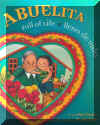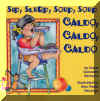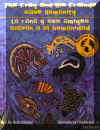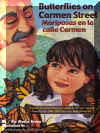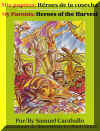 Baila, Miranda, baila - Dancing Miranda, Hardcover, Bilingual, Book,
Diane de Anda, Lamberto Alvarez, Julia Mercedes Castilla,
Preschool - 2nd Grade,
9781558853232, $16.95
Baila, Miranda, baila - Dancing Miranda, Hardcover, Bilingual, Book,
Diane de Anda, Lamberto Alvarez, Julia Mercedes Castilla,
Preschool - 2nd Grade,
9781558853232, $16.95
Author : Diane de Anda,
Illustrator : Lamberto Alvarez, Translator : Julia Mercedes Castilla
Preschool - 2nd Grade
Baila, Miranda, baila - Dancing Miranda
 Baila, Miranda, baila - Dancing Miranda, Hardcover, Bilingual, Book,
Diane de Anda, Lamberto Alvarez, Julia Mercedes Castilla,
Preschool - 2nd Grade,
9781558853232, $16.95
Baila, Miranda, baila - Dancing Miranda, Hardcover, Bilingual, Book,
Diane de Anda, Lamberto Alvarez, Julia Mercedes Castilla,
Preschool - 2nd Grade,
9781558853232, $16.95
$945.00 for the Bilingual Collection Blue Books Set, Including 20%-Off, Free Shipping, and No Sales Tax : 65 Hardcover Bilingual Books and 10 Softcover Bilingual Books
 A young girl
learns to dance for her mother’s joy in this enchanting children’s picture
book.
A young girl
learns to dance for her mother’s joy in this enchanting children’s picture
book.
Miranda lives to dance. Hers is a world filled with dizzying pirouettes and graceful flying leaps, all to the rhythm dictated by her very own heart. Miranda eagerly prepares for the day of her recital and her first stage appearance, a day on which she is sure to shine. But on the day of the recital, Miranda accidentally learns about her mother's debilitating childhood illness—an illness that prevented her from dancing as a child. Suddenly Miranda's limbs feel leaden, and she's completely lost her sense of flight. When Miranda sees the world though her mother's eyes, she feels trapped within the confines of her own body. Can Miranda rediscover her whirl and twirl? Complemented by kinetic images, the story of Dancing Miranda urges young readers to appreciate their gifts and look past the physical limitations that threaten a soaring spirit. Instead, they may find that their efforts give a little joy to those who have lost their own.
 Listen to
Vienna Rose read Dancing Miranda to you. A marvelous example of the magical encounter
between a child and books that we wish for all children.
Listen to
Vienna Rose read Dancing Miranda to you. A marvelous example of the magical encounter
between a child and books that we wish for all children.
School Library Journal : Gr 1-3-Miranda is a gifted dancer. She dances everywhere, with or without music, across grass and blacktop, while feeding the cat and during her dance classes. There is one place where she has not danced, and that is on the stage. Now that she is about to do so for the first time, in the starring role, Miranda hears her mother telling her instructor how proud she is of her daughter. It seems that her mother had polio as a child and wore heavy leg braces until she was a teen. Miranda is shocked and saddened by this revelation, and her feelings cause her to flub the rehearsal. Only a talk with her mother about the great joy the latter receives from watching her daughter restores her former exuberant excellence. This predictable story is told in a slightly saccharine manner. The illustrations in bright, clear colors are a combination of slick Barbie coloring book and interesting perspectives, dramatic lighting, and primitive forms.
Publishers Weekly : Working with a potentially rich multicultural family story, Ada (Under the Royal Palms) and first-time author Zubizarreta instead deliver a timely but lifeless novel about a Mexican-American girl in California and her newly arrived Mexican cousin. The 11-year-olds--Margarita, who insists on being called Margie and regularly refers to her Texas birth, and Lupe, who barely speaks English--come across as little more than mouthpieces for the authors' message. While the opening chapter, in which Margarita unhappily brings Lupe to her own classroom, is promising, the authors rely too much on descriptions and summaries, forgoing opportunities to "show, don't tell." Margarita's dismay over losing her hard-won Americanism is realistically age-appropriate, but Lupe seems overly mature. Facing her long-lost father, she thinks: "The same painful longings that had nourished all of her fantasies were now fueling her anger against this man who seemed to enter into and disappear from her life so easily." Margarita's eventual appreciation of her heritage and Lupe's adjustment to her new country are predictable and too easily come by to have true emotional resonance. A Spanish-language edition, Nacer Bailando, is available simultaneously. Ages 8–12.
Bilingual
Collection Blue Books :
